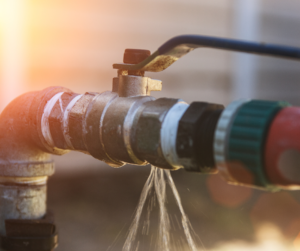 Water leaks can lead to significant damage, inflated utility bills, and more. Detecting water leaks early is pretty important. But, you don’t have to call the plumber, just yet. Let’s explore methods for detecting water leaks in your home.
Water leaks can lead to significant damage, inflated utility bills, and more. Detecting water leaks early is pretty important. But, you don’t have to call the plumber, just yet. Let’s explore methods for detecting water leaks in your home.
1. Monitor Your Water Meter:
One of the simplest ways to identify a water leak is by monitoring your water meter. Start by ensuring that no water is being used in your home. Then, take note of the meter reading and avoid any water usage for a few hours. Afterward, check the meter again. If the reading has changed, it indicates a possible leak.
2. Check Water Usage Patterns:
Closely monitoring your water bill and usage patterns can also help identify potential leaks. If you notice a sudden, unexplained increase in your water consumption, it could be indicative of an unnoticed leak. Compare your current usage to previous months to identify any significant variations.
3. Inspect Visible Water Sources:
Regularly inspecting visible water sources, such as faucets, showerheads, and toilets, is essential. Look for any drips, leaks, or loose connections. Fixing these minor issues promptly can save significant amounts of water in the long run.
4. Analyze Water Meter Readings during Inactive Periods:
Select a period when water usage is expected to be minimal, such as before bedtime or during working hours. Take a meter reading before and after this inactive period. A noticeable change may suggest a hidden leak in your plumbing system.
5. Utilize Food Coloring:
Toilet leaks can be silent culprits of water wastage. Add a few drops of food coloring to the toilet tank and wait for about 30 minutes without flushing. If the color appears in the toilet bowl, it indicates a leak in the flapper valve or other internal components, which should be repaired promptly.
6. Conduct a Visual Inspection of Appliances:
Inspect water-related appliances, including washing machines, dishwashers, and refrigerators with ice makers. Look for signs of leakage around the connections, hoses, and valves. Addressing any leaks or damaged components can prevent future water damage.
7. Check for Unusual Odors or Mold Growth:
Water leaks often result in dampness, which can lead to the growth of mold and mildew. Detecting musty odors or observing mold patches on walls, ceilings, or floors can be indications of an underlying leak.
8. Listen for Unusual Sounds:
An actively running water meter, hissing or dripping sounds behind walls, or vibrating pipes can indicate leaks. Pay attention to these audible signs and investigate their source to address any potential leaks promptly.
Detecting water leaks in your home is crucial for both your wallet and the environment. By monitoring your water meter, analyzing usage patterns, and conducting regular inspections, you can identify leaks early on and take prompt action. Remember, proactive leak detection not only saves money but also conserves water, a valuable resource that should be utilized responsibly. By implementing these detection methods, you can safeguard your home and contribute to a sustainable future.
